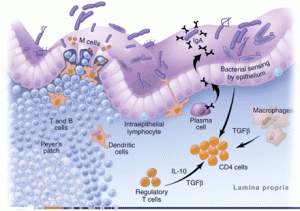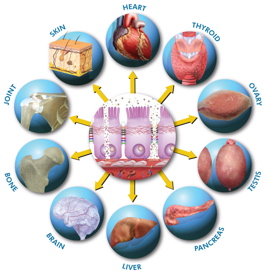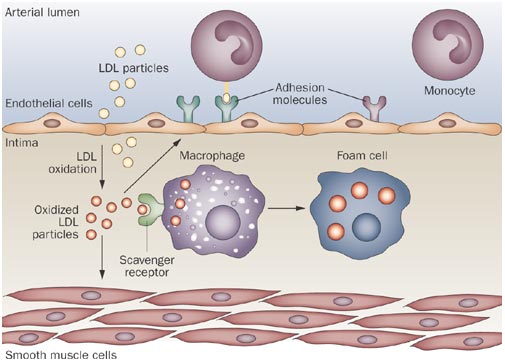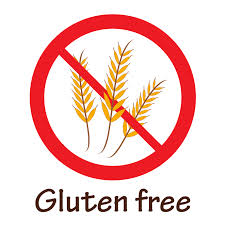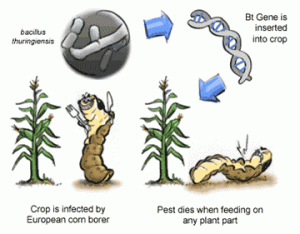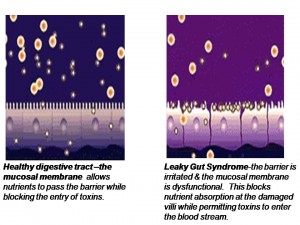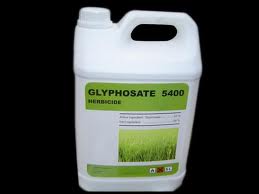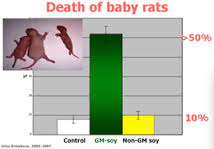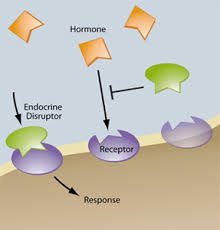 Experts Convene in First Gluten Summit
Experts Convene in First Gluten Summit
Wow! I hope all of you got a chance to listen to some of the experts that spoke in the Gluten Summit last month. Dr. Tom O’Bryan did an excellent job in gathering some of the world’s leading researchers and medical experts in the field of gluten sensitivity (now termed “non-celiac gluten sensitivity” in the medical literature) and “gluten-related disorders”. These researchers and medical specialists, representing the fields of immunology, neurology, pediatrics, cardiology and gastroenterology, spoke on various health disorders linked to wheat consumption and the potential consequences on our health and the health of our children. One thing is certain: problems with wheat consumption are not limited to the gastrointestinal tract, as many medical doctors still believe. There is an overwhelming amount of evidence showing that wheat consumption is contributing to systemic chronic disease including various inflammatory and autoimmune diseases and wreaking havoc on the health of Americans and our children.
For those of you that did not have a chance to hear all of these speakers, I have good news: you can still hear any of these talks that you missed! San Jose Functional Medicine has purchased the entire set of presentations and offering direct access of all these talks to our patients! Just let us know by email that you are interested in hearing these talks and enter “Gluten Summit” in the subject of the email ! We will send you a link that you can use to access the entire set of talks so you don’t miss a thing! You can also purchase the entire set of talks directly from the Gluten Summit website. Here is a summary of my personal Fab Four speakers from this amazing summit:
 1. Alessio Fasano, M.D. (Bio) Why Creating the Healthiest Intestinal Environment Possible Can Arrest Your Vulnerability to the #3 Cause of Getting Sick and Dying
1. Alessio Fasano, M.D. (Bio) Why Creating the Healthiest Intestinal Environment Possible Can Arrest Your Vulnerability to the #3 Cause of Getting Sick and Dying
Did Humans Evolve to Consume Wheat?
According to Dr. Fasano, wheat is not digestible by the human gastrointestinal tract. He explained how wheat protein (gluten) has an unusual sequence of amino acids that our digestive enzymes are not capable of digesting and therefore gluten cannot be completely broken down. This poor digestibility of wheat may not be a problem for the majority of people but this leaves a percentage of people at risk of health problems potentially causing a variety of symptoms.
He states the reason for the undigestibility of wheat is that for approximately 99.9% of human evolution, our ancestors were gluten-free. Humans only recently started to consume grains about 10,000 years ago with the event of agriculture when humans changed their nomadic lifestyle from migrating from place to place which offered animals for food and seasonal crops to settlers who began to domesticate animals and grow crops. This is when grains (wheat, barley, rye) came into the picture in terms of human evolution. He also stated that due to the hybridization of wheat over the years, the wheat we are presently consuming is very different than the wheat our ancestors ate. The amount of modern gluten content per dry wheat of the grain is much higher than it used to be (ie: 30-40% vs 15-20%) and this could partly explain why we are now seeing so many health problems related to gluten consumption.
 At What Age Is It Safe To Give Our Kids Wheat?
At What Age Is It Safe To Give Our Kids Wheat?
There is a lot of research going on in this field right now and we cannot answer this question, but we do know if you introduce gluten too early in childhood, it can cause problems.
“If we introduce gluten too early, we dramatically increase the risk of developing celiac disease in genetically-predisposed kids”
The current pediatric recommendations are to introduce gluten from 4-6 months of age but recent evidence shows there is decreased risk of celiac disease (CD) by postponing introduction of gluten. Recent studies, including a study by Dr. Fasano himself which followed 700 kids at risk of CD since birth, has shown decreased risk of celiac disease if gluten is introduced after 1 year of life in order to allow the immature immune system of the GI tract to develop properly and deal sufficiently with this unusual protein. Recent data also clearly indicates there is no risk of introducing gluten later in life.
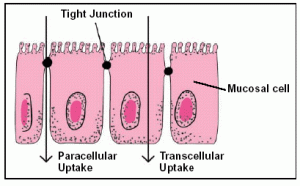 What Is Intestinal Permeability And How Does It Affect Our Health?
What Is Intestinal Permeability And How Does It Affect Our Health?
Dr. Fasano states one of the most-overlooked functions of the gastrointestinal (GI) tract is to act as a barrier between the environment and our internal body. The GI tract acts as an interface between harmful compounds from the outside world and our internal environment. A single layer of cells (the epithelial lining of the GI tract) keeps the enemy outside and ensure that these harmful compounds (such as bacteria, toxins and undigested food molecules) do not enter the body (bloodstream). However, there are “checkpoints” along the GI tract which allow passage of some special molecules. These checkpoints are called “tight junctions”. When the checkpoints are breached, there is uncontrolled passage of “instigators” which can cause significant health consequences. The permeability of the gut determines our biologic and physiologic health.
Characteristics of the GI tract:
- The greatest possible interface with the environment so we can digest as much food as possible
- An efficient system of digestion and absorption
- The most sophisticated immunological component of our body
- Controlled by a sophisticated neuroendocrine network
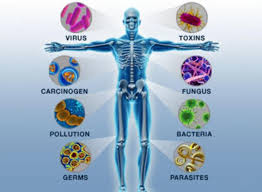 Causes of Intestinal Permeability/Leaky Gut Syndrome:
Causes of Intestinal Permeability/Leaky Gut Syndrome:
Dr. Fasano summarizes the factors that have been shown in the literature to lead to uncontrolled traffic of molecules across the GI lining:
- Infections
- Dysbiosis
- Pollutants
- Chemicals
- GMO foods
Consquences of Intestinal Permeability/Leaky Gut Syndrome:
The consequences of uncontrolled trafficking of molecules may include the following, depending on our genetics:
- Food allergies
- Chronic inflammation
- Autoimmune disease
- Cancer
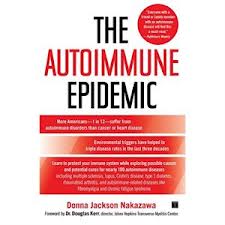 The Epidemic of Autoimmune Disease
The Epidemic of Autoimmune Disease
Dr. Fasano describes an epidemic of autoimmune disease that has been taking shape the last 40-50 years. The autoimmune disease epidemic has coincided with the introduction of antibiotics. Using antibiotics is like dropping a bomb on our gut. The susceptible bacteria are killed and the non-susceptible ones grow and take over. This creates an imbalance of good and bad bacteria of the gut. We are all exposed to antibiotics in vegetables and animal products. We always need to consider the food we are feeding our gut bacteria.
He compares our genetic information of our DNA to a block of precious marble and all of our genetic potential is directly influenced by our environment. We cannot blame our genetics for this epidemic because changes in genetics takes centuries, not years. This epidemic we are seeing must be directly related to our inability to adapt to our rapidly-evolving environment.
Key factors for the development of autoimmune disease:
- Genetics
- Environmental trigger
- Intestinal permeability
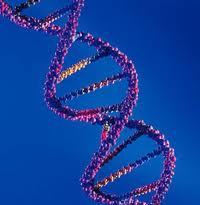 Human Beings are Genetically Rudimentary as a Species
Human Beings are Genetically Rudimentary as a Species
Dr. Fasano points out that one of the things the Human Genome Project discovered is that humans only have 25,000 genes. At the same time, a certain species of worm has been found to have approximately 90,000 genes. How can such a simple life form have more genes than humans? How did humans become so sophisticated with such few genes? The answer may lie in the fact that humans are really made from two genomes: our genetics and our microbiome (living organisms of the gut). Our microbiome is 100 times more complex in terms of genetics than human DNA. This helps to explain how humans evolved into such complex living organisms.
The Complexity of the Gut Microbiome and Why We Need This
Technology is now allowing us to understand the complexity of the microbiome. The microbiome helps the intestinal immune function to mature. We need gut bacteria for proper immune function and to minimize inflammation. When these bacteria live in harmony, we have good immune health. Roughly 1,000-1,200 different species of bacteria live in the gut.
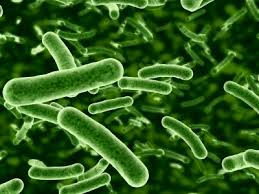 Our Microbiome Plays a Key Role in How Our Genes Are Expressed and is Highly Influenced By Our Environment
Our Microbiome Plays a Key Role in How Our Genes Are Expressed and is Highly Influenced By Our Environment
Regarding a person’s risk in developing autoimmune disease, Dr. Fasano states:
“Even if you are genetically skewed to develop these problems, it’s not definite that you will. It depends on the microbiome. And the microbiome composition is highly, highly influenced by our environment.”
 Environmental Influences on our Microbiome:
Environmental Influences on our Microbiome:
- Nutrition: our microbiome eat our leftovers
- Pollution
- Chemicals
- Radiation
“The autoimmune epidemic is linked to changes in the composition of the microbiome due to environmental stimuli”
“The foods we select on a daily basis has a direct impact on the development and maintenance of the healthy bacteria of our gut”
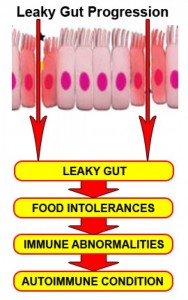 Steps Leading To Inflammation In The Tissue:
Steps Leading To Inflammation In The Tissue:
Dr. Fasano summarizes the steps that lead to autoimmunity and chronic inflammation:
- Consumption of gluten
- Gluten is only partially digested and inflammation will be instigated if the immune system sees the peptides
- The intestinal barrier is breached after zonulin is released
- These things happen in all of us to some degree but about 70-80% of us will suffer no consequences as a result
- Others will suffer consequences from the encounter between the instigator and the immune system
- Cytokines are fired against the enemy and lead to tissue destruction
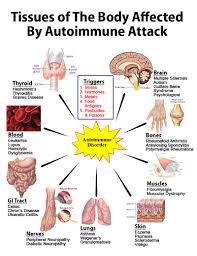 “The gut is not like Las Vegas. What happens in the gut doesn’t stay in the gut.”
“The gut is not like Las Vegas. What happens in the gut doesn’t stay in the gut.”
Dr. Fasano emphasizes that inflammation in the gut can spread to any tissue in the body. In classic celiac disease, tissue damage occurs in the intestines. However, immune cells can go anywhere in the body and cause arthritis (joints), peripheral neuropathy (nerves) or dermatitis herpetiformis (skin). He believes it is reductive to say that celiac disease is a GI condition. The GI tract is simply the battlefield of the first encounter of the enemy and our immune soldiers. But the war can continue in other parts of the body causing ravaging effects on our brain and peripheral nervous system, our skin, our joints and many of our internal organs.
 2. Natasha Campbell-McBride, MD (Bio) The Critical Nature of Gut Health and its Impact on Children’s Brains
2. Natasha Campbell-McBride, MD (Bio) The Critical Nature of Gut Health and its Impact on Children’s Brains
Gut and Psychology Syndrome (GAPS): Natural Treatment for Autism, ADHD, Dyslexia, Dyspraxia, Depression and Schizophrenia
Dr. Campbell tells a fascinating personal story of how she learned firsthand the close connection that exists between the health of the gut and the health of the brain. Dr. Campbell was trained in Russia and practiced as a neurologist for 5 years and then a neurosurgeon for 3 years. She observed that most of her degenerative neurological patients (ie: MS, ALS) also had digestive issues and wondered if this could be related to their neurological issues. Conventional medicine sees no relationship between these two types of problems. Her first child was diagnosed with autism by age 3. She took him to the best convention medicine doctors she knew but conventional medicine offered no help for her and her son. She returned to university to study nutrition and gathered all the information she could on how nutrition impacts brain health and the health of the body. She implemented her new knowledge with dietary and lifestyle changes and nutritional supplements for her son and his condition started to improve for the first time.
 Her son now shows no sign of autism and she believes this is because of early intervention in nutritional and dietary needs of these types of children. She believes the younger the child starts treatment, the greater the chance of recovery. She states if the child starts treatment by 4 or 5 years of age, it is very possible to obtain a full recovery from autism or any of these learning and behavioral disorders. The older the child is before treatment is started, the more difficult it is to obtain a full recovery. But there are improvements in all ages, even adults, so she is always hopeful. She began working more and more with autism as well as ADD/ADHD, dyslexia, dyspraxia, OCD and other neurological disorders after she saw the results with her son. She discovered there is a connection between the physical health of these children and their mental health.
Her son now shows no sign of autism and she believes this is because of early intervention in nutritional and dietary needs of these types of children. She believes the younger the child starts treatment, the greater the chance of recovery. She states if the child starts treatment by 4 or 5 years of age, it is very possible to obtain a full recovery from autism or any of these learning and behavioral disorders. The older the child is before treatment is started, the more difficult it is to obtain a full recovery. But there are improvements in all ages, even adults, so she is always hopeful. She began working more and more with autism as well as ADD/ADHD, dyslexia, dyspraxia, OCD and other neurological disorders after she saw the results with her son. She discovered there is a connection between the physical health of these children and their mental health.
 Neurological Patients are Usually Physically Ill
Neurological Patients are Usually Physically Ill
Dr. Campbell has written two books on how the health of the gastrointestinal (GI) tract affects both psychological and physical health conditions. Gut and Psychology Syndrome (GAPS) focuses on mental conditions and Gut and Physiology Syndrome focuses on physical conditions. She states that all of these syndromes boil down to what is happening in the digestive tract of these people.
“All disease begins in the gut”—Hippocrates
The Significance of the Gut Flora
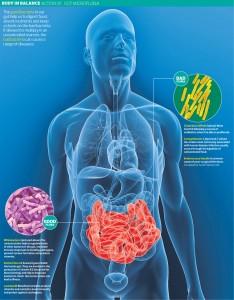 Dr. Campbell explains that about 90% of all the cells in the human body are contained in the gut flora. There are 10 times as many bacteria in the gut than there are cells in the human body.
Dr. Campbell explains that about 90% of all the cells in the human body are contained in the gut flora. There are 10 times as many bacteria in the gut than there are cells in the human body.
“Our bodies are just a shell, a habitat for this mass of microbes which live inside us. And we ignore these microbes at our peril because their effect on the rest of the body, on every aspect of health in the human body, is absolutely monumental.”
What happens in Gut and Psychology Syndrome (GAPS) patients? They have abnormal gut flora. In healthy patients, our gut flora is dominated by beneficial microbes. These beneficial microbes include beneficial bacteria, fungi, parasites, worms and viruses. If they dominate, they control disease-causing microbes. In this GAP group of people, their gut flora gets wiped out and becomes overrun by pathogenic flora (bacteria) and other disease-causing pathogens. These pathogens digest your food and convert it into disease-causing substances. These toxic substances can be absorbed through the gut lining (in leaky gut) and distributed around the body where they cause disease. Wherever these toxins accumulate, they will cause disease. If it’s the joints, they will get arthritis. If it’s the brain, they will suffer a mental disorder.
 The Gut Flora and Learning Disabilities
The Gut Flora and Learning Disabilities
Dr. Campbell is convinced that GAP children are born with a normal, healthy brain. They develop abnormal gut flora within the first two years of life which produce toxic substances. These toxic substances are absorbed into the blood and can enter the brain. This causes brain dysfunction and mental disorders.
How Do Babies Learn The First Few Years Of Life?
Babies learn by listening to everyone, smelling everything and touching everything in their environment. They learn by using their sense organs to collect information from their environment. A healthy brain is able to process all this information. Toxicity in the brain makes processing information difficult. All this information turns into a noise or a “mush” and the child cannot decipher anything useful. As a result, they don’t know who their mother or father is and they are likely to grab anyone’s hand and walk away with away with them because “mommy” doesn’t mean any more than another stranger. They don’t know what to do with their toys or other children that they play with.
 Other Manifestations of Toxicity in the Brain
Other Manifestations of Toxicity in the Brain
Depending on the type and amount of toxins that children’s brains are exposed to, they may develop any of the following conditions:
- Hyperactivity
- ADD
- Dyslexia
- Dyspraxia
- Oppositional defiance
- Undiagnosed symptoms
Dr. Campbell is afraid this last category is the most common and fits the majority of children.
Dr. Campbell believes that medical doctors often procrastinate before giving a diagnosis and precious time is wasted. The younger the child is, the quicker we can make a change in their gut flora and heal the gut. She states the most important thing for doctors to focus on is to:
“Heal and seal the gut lining”
Dr. Campbell says the quicker we can heal and seal the gut and stop the river of toxins from going to the brain, the faster the child can recover. The child’s brain will take care of eliminating the toxins which are currently there. You just have to stop the flow of additional toxins into their brain. The younger the child is, the quicker we can make a change in their gut flora and the more likely to have a full recovery. The older the child is, the slower the recovery and less likelihood of a full recovery.
 Seizures Are Signs of Toxicity
Seizures Are Signs of Toxicity
Dr. Campbell says when toxicity builds up too high in the brain, this becomes very damaging to the brain so the brain sends one discharge through the brain to “clear toxins” in the brain. This manifests as a seizure seen in epilepsy. The vast majority of epileptic seizures are born in the digestive tract of the child from toxins penetrating from the digestive tract into the blood. These toxins can then penetrate from the blood into the brain causing toxicity in the brain. The brain uses seizures as a way to discharge toxicity. If the gut issues are not resolved, then the brain will accumulate toxins again. Psychiatrists have observed that psychosis often disappears for a short period of time after an epileptic seizure which supports this view of seizures clearing toxins from the brain. The person becomes normal, lucid and you can reason with this person.
An epileptic seizure can be considered a “safety valve” for the brain.
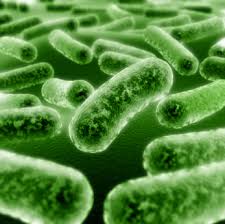 Psychiatric Disorders in Adults Linked to Abnormal Gut Flora
Psychiatric Disorders in Adults Linked to Abnormal Gut Flora
Dr. Campbell is convinced that most psychiatric disorders in adults are linked to abnormal gut flora including:
- Schizophrenia
- Depression
- Bipolar disorder
- Addictive behaviors and personalities
According to Dr. Campbell, adult epilepsy can also be linked to gut toxicity.
Leaky Gut
According to Dr. Campbell, pathogenic microbes in the gut make the gut porous and leaky. If food, including all protein, is incompletely digested, then these partially digested proteins can penetrate into the blood causing immune responses. Allergies or intolerances to various foods can develop when the immune system does not recognize the food antigens coming into the bloodstream. This is not a ‘true’ allergy so they are often not recognized by allergists. These reactions can manifest as ‘any symptom under the sun’. Reactions to food can be delayed from two hours to two weeks after the intake of the food, which makes detection very difficult. Also, reactions to different foods can overlap. The more damaged the gut lining, the more severe the symptoms.
Dr. Campbell states that 85% of our immune system is located in the gut wall. The gut is the largest immune organ of the body. It contains 90% of the cells and genetic material of the body.
“There is a significant amount of information exchange that occurs between the gut flora and the immune system of the gut. If the gut flora is abnormal, the immune system cannot function normally.”
Abnormal gut flora leads to impaired immune response to environmental stimuli causing allergy and allergic reactions.
- Asthma
- Eczema
- Hay fever
- Skin rashes
- Urticaria
- Other atopic responses
Gut and Physiology Syndrome (GAPS) Patients
Dr. Campbell believes a person with neurological problems is probably maldigesting most foods. The problem is with the gut lining. The focus should be on healing and sealing the gut lining. Then the food will have a chance to be digested properly before it is absorbed. 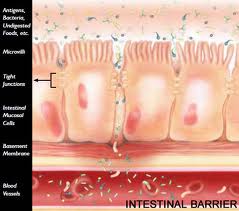 This is exactly what the GAPS nutritional protocol is all about.
This is exactly what the GAPS nutritional protocol is all about.
- GAPS patients have abnormal gut flora and leaky gut which triggers immune responses
- Leaky gut leads to food sensitivities, malabsorption and nutritional deficiencies
- Pathogenic flora converts food into toxic chemicals which gets distributed around the body
Autoimmunity is Born in the Gut
Improperly digested foods with immune cells attached to them can enter any tissue in the body. Whatever tissue they enter, they can cause damage to that tissue and physical conditions develop. Dr. Campbell believes all autoimmunity is born in the gut.
- Antibodies develop against partially digested food proteins
- Food proteins resemble proteins in our body
- Antibodies mistakenly target the body’s own proteins
- This leads to autoimmune disease
Common Autoimmune Conditions
- Rheumatoid arthritis (RA)
- Osteoarthritis (OA)
- Multiple sclerosis (MS)
- Amyotrophic lateral sclerosis (ALS)
- Nephropathy
- Neuropathy
- Psoriasis
- Alopecia
“I’m absolutely convinced that autoimmunity begins in the gut”
- Focus on the gut
- Drive out pathogenic microbes
- Replace them with beneficial microbes
- Heal and seal the gut lining
Fermented Foods to Strengthen and Heal the Gut
- Our ancestors fermented food to preserve them
- Fermentation produces billions of bacteria that strengthen and heal the gut
- Fermented foods are also predigested by bacteria to make food easier to digest and vitamins and minerals easier to absorb
- Introduce and increase probiotics gradually since this leads to death of pathogenic bacteria
- Pathogens release toxins as they die
- Die-off reaction can worsen symptoms and make someone quite ill (ie: headaches, migraines, fatigue, etc.)
Dr. Campbell closes with the following statement:
“The fact that your doctor doesn’t know that something is curable doesn’t mean the knowledge doesn’t exist somewhere”
 3. William Davis, MD (Bio) Modern Wheat: It’s MORE Than Wheat
3. William Davis, MD (Bio) Modern Wheat: It’s MORE Than Wheat
Wheat-Free to Reduce Blood Sugar
In an effort to reduce blood sugar, and based on the fact that wheat products increase blood sugar more than nearly any other food, Dr. Davis asked his patients to eliminate wheat, including whole grain products, from their diets. The results his patients experienced went beyond anyone’s expectations: incredible weight loss; relief from acid reflux and the gas, cramping, and diarrhea of irritable bowel syndrome; increased energy, more stable moods, and deeper sleep; relief from arthritis, including rheumatoid arthritis; dramatically improved cholesterol values; reduced blood pressure and inflammatory measures, and more. On a wheat-free diet, his patients experienced:
 Weight loss
Weight loss- Relief from acid reflux and IBS
- Increased energy
- More stable moods
- Deeper sleep
- Relief from arthritis
- Improved cholesterol values
- Reduced blood pressure
- Reduced inflammatory markers
Based on his clinical evidence, Dr. Davis has come to view wheat consumption as a widespread societal problem causing obesity, illness and suffering. He is author of “Wheat Belly: Lose the weight and Find Your Path Back to Health”. He has an upcoming book coming out soon: “Heart Scam: The multi-billion dollar medical rip-off that is exploiting America, hiding cures, and bankrupting healthcare”.
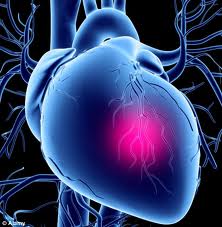 Finding the Cause of Heart Disease
Finding the Cause of Heart Disease
Dr. Davis explains that CT heart scans are imaging devices developed to detect coronary atherosclerosis in individuals (actual heart disease, not just risk factors like high cholesterol or high blood pressure). This produces a calcium score based on the amount of calcium deposited in coronary arteries (plaque). Once you have plaque, it grows like mad, at average rate of 30% per year. Statin drugs have been shown to have no effect on atherosclerosis or calcium scores. Many doctors thought that the calcium scores were not reliable. Dr. Davis took a different approach. He and his colleagues did research showing that you have to control blood sugar to control atherosclerosis. If you don’t control blood sugar, you will develop coronary plaque and lose control of cardiovascular risks. That’s when he asked himself how he could help his patients nutritionally to reduce cardiovascular risk without using drugs.
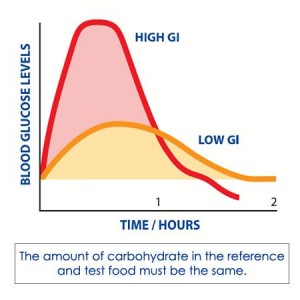 How Do You Control Blood Sugar Nutritionally?
How Do You Control Blood Sugar Nutritionally?
There are lots of drugs that control blood sugar. Dr. Davis wanted to take a nutritional approach and remove foods that are highest on the glycemic index (GI). The glycemic index is a measurement of how rapidly food is broken down to glucose which causes elevations in blood sugar (see below). He discovered the glycemic index of two slices of wheat bread is 72, higher than a tablespoon of sugar!
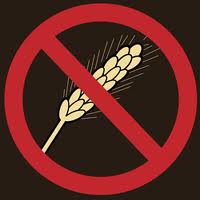 When patients ditched wheat and junk food, the following blood markers improved:
When patients ditched wheat and junk food, the following blood markers improved:
- Blood sugar lowered
- HbA1C lowered
- Triglycerides lowered
- LDL decreased
These Patients Experienced The Following Unexpected Health Transformations:
- Weight loss

- Low blood pressure
- Asthma disappeared
- Rashes cleared up
- Migraines vanished
- Acid reflux alleviated
- IBS improved or cleared up
- Joint pain relieved
- Moods improved
The Glycemic Index of Foods
Very few foods have a glycemic index above 70, including:
- Dates
- Figs
- Gluten-free foods (cornstarch, rice flour, tapioca starch, potato starch)
- Whole wheat
- White flour
Dr. Davis found that the glycemic index of wheat is among the highest of all foods (72). Almost every official U.S. government agency recommends a grain-dominated diet and he feels this is contributing to our high rates of diabetes and cardiovascular disease. 50% of all calories consumed worldwide come from grains.
What Exactly is the Glycemic Index?
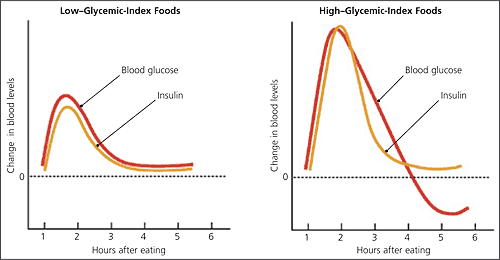 The glycemic index is a measure of how high blood sugar goes 90 minutes after eating that food. Increased blood sugar triggers increased insulin release. Chronic high insulin levels lead to poor responsiveness to insulin (insulin resistance). High blood sugar also leads to glycation (glucose modification of proteins).
The glycemic index is a measure of how high blood sugar goes 90 minutes after eating that food. Increased blood sugar triggers increased insulin release. Chronic high insulin levels lead to poor responsiveness to insulin (insulin resistance). High blood sugar also leads to glycation (glucose modification of proteins).
Glycation leads to:
- Cataracts (glycation of the lenses of the eyes)
- Hypertension, arteriosclerosis and coronary atherosclerosis (glycation of blood vessels)
- Arthritis (glycation of cartilage)
“Glycation is a fundamental process underlying multiple disease states and aging”
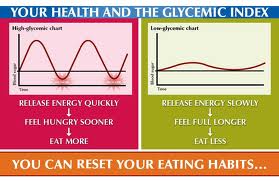 Benefits from Removing Wheat from the Diet
Benefits from Removing Wheat from the Diet
- Eliminate high blood sugar
- Eliminate risk for glycation
- Eliminate low blood sugar
Beware the Vicious Blood Sugar Cycle
Dr. Davis explains that high blood sugar leads to low blood sugar. Hunger kicks in two hours later after having high blood sugar. Peptides from gliadin from wheat (gluteomorphins) act like opiates, further stimulating appetite and cravings for carbs. People consume an average of 400 calories of carbs more per day due to gluteomorphins! Dr. Davis estimates that high glycemic foods are 80-90% responsible for the diabetes epidemic we are now seeing. Primitive societies do not suffer from diabetes.
Modern Wheat
 Dr. Davis explains that modern wheat has the following characteristics which can impact our health:
Dr. Davis explains that modern wheat has the following characteristics which can impact our health:
- High-yield, semi-dwarf strain
- Concoction of agricultural genetics
- Modern wheat has 42 chromosomes whereas wheat preceding biblical times had 14 chromosomes
- Very different biochemically and genetically from wheat only 40-50 years ago
- Celiac disease rates have quadrupled during this period of time
- Contains GLIA-alpha 9 gene which likely triggers celiac disease
Consumption of Grains Represent Commoditization of the Human Diet
 Dr. Davis explains that the modern consumption of wheat came about because of agricultural and food industry interests in producing an inexpensive food commodity that could be easily stored and transported. Mass production of wheat offered the following conveniences:
Dr. Davis explains that the modern consumption of wheat came about because of agricultural and food industry interests in producing an inexpensive food commodity that could be easily stored and transported. Mass production of wheat offered the following conveniences:
- A product that can be easily transported
- Extended shelf life measured in years (yes, years, not months)
- People are indifferent to quality differences
- Worldwide price differential
- Control the diet from the top down by food industry and government
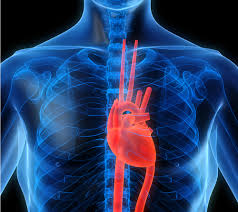 How Blood Sugar Affects Your Cholesterol and Risk for Heart Disease
How Blood Sugar Affects Your Cholesterol and Risk for Heart Disease
Dr. Davis explains that high blood sugar leads to elevations in small LDL particles, the worst of the “bad cholesterol”. These small LDL particles can become oxidized and lead to coronary artery disease (CAD). He makes the following points on how eating excess grains leads to the formation of excess LDLs and accounts for the increase in heart disease in the U.S.:
Small LDL Particles
- Excess of small LDL particles are the most common abnormality in coronary disease
- Small LDLs have a different shape and different conformation
- They are more adherent to connective tissue
- They linger in the bloodstream for at least a week
- High blood sugar leads to formation of small LDLs
- Small LDLs become more glycated and oxidized (glycoxidized)
- Glycoxidized (glycated and oxidized) LDL particles can cause heart disease
- High blood sugar causes glycation of LDL
- LDL are very glycation-prone
- Grains, sugars and starchy legumes lead to small LDL formation
- If you reduce grains, sugars and starchy legumes, LDLs will “drop like a stone”
How Grains Contribute to Heart Disease
- Trigger formation of small LDLs
- Increase blood sugar
- Lead to glycation and oxidation of the arteries
- Lead to high triglycerides (TG) due to de novo lipogenesis in liver
 What’s the Effect of Complete Grain Removal?
What’s the Effect of Complete Grain Removal?
- Drop in appetite
- Drop in caloric intake
- Weight loss (avg 26 lbs in 6 months)
- Drop in HbA1C and fasting glucose
- Drop in insulin
- Drop in small LDLs
- Drop in TGs
- Drop in postprandial lipoproteins
- Rise in HDL (“good” cholesterol)
- Follow a diet that gets rid of small LDLs
- Eliminate grains and sugars
- Raise 25-hydroxy vitamin D to 60-70 ng/ml
- Supplement with 3,000-3,600 mg EPA-DHA omega-3 fatty acids/day
- TSH < 1.5, free T3, T4 in upper half of normal
- Identify hidden genetic causes (LipoA, Apo E4)
“Statin drugs are a detour that the world has taken. The vast majority of people do not need statin drugs. What they are treating is an excess of LDL particles because they consume grains.”
Dr. Davis has observed that a percentage of patients will have withdrawal symptoms from stopping consumption of wheat, AKA “Atkins flu” or “Paleo flu”. This is because in some people who consume wheat, their bodies create gluten-derived opiates (gluteomorphins) which act on the opiate receptors of the brain. Symptoms may include:
- Fatigue
- Depression
- Nausea
- Unable to exercise
- Headaches
Some people will experience these symptoms when they stop wheat consumption. This is withdrawal from gluten-derived opiates and will last 3-7 days following withdrawal from wheat. They need to understand that this is normal and symptoms will only last for a brief period of time.
Dr. Davis explains that insufficient beneficial flora of the gut leads to increased risk of heart disease. Disrupted gut flora causes increased LDL which can become oxidized leading to heart disease. He recommends correcting the gut flora to minimize this risk.
Helpful Strategies for Starting a Gluten-Free Diet (GFD)
- Choose a non-stressful time
- Hydrate
- Use sea salt
- Use magnesium malate (1,200 mg 2x/day)
- High potency probiotic (50 billion CFUs/day)
- This protocol can be implemented before starting a GFD
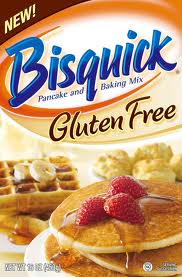 Are Gluten-Free Diets Bad for You?
Are Gluten-Free Diets Bad for You?
Dr. Davis emphasizes not to replace something bad with something else bad. Don’t consume gluten-free (GF) junk carbohydrates such as corn starch, rice flour, tapioca starch, potato starch when starting on a GF diet. These increase blood sugar more than whole wheat. GF food manufacturers often put taste before nutrition. GF junk food can cause weight gain and negative health consequences.
Points of Consideration
- Protein in corn can be problematic
- Corn is genetically modified in the U.S.
- Consider glyphosate residues (from chemically-treated foods)
- Consider Bt Toxins (from chemically-treated foods)
- Always choose organic (non-GMO) whenever possible
He tells patients they can have sandwiches, pasta, pizza, muffins, and cake but they have to be grain-free. They can use the following for the flour:
- Ground almonds
- Almond meal
- Almond flour
- Walnuts
- Pecans
- Sunflower seeds
- Pumpkin seeds
- Coconut flour
- Golden flaxseed
 4. Jeffrey Smith (Bio) OMG–GMO and its Connection to Gluten
4. Jeffrey Smith (Bio) OMG–GMO and its Connection to Gluten
Wheat: Genetically Modified or Hybridized?
Mr. Smith explains that wheat is not currently genetically modified or genetically engineered (involving splicing and inserting genes into DNA). But wheat is selectively bread for certain traits, involving taste, texture, rise, high-yield and drought tolerance.
Monsanto’s Roundup Ready Crops
According to Mr. Smith, Monsanto wants to introduce genetically-engineered Roundup Ready wheat that doesn’t die when sprayed with Roundup herbicide. The food stores this herbicide so we get a heavy dose of Roundup herbicide in every bite. They want to genetically engineer wheat the same way as they have done for these crops:
- Corn
- Soy
- Cotton and cottonseed oil
- Canola oil
- Sugar beets
- Alfalfa
- Little zucchini
- Little crookneck squash
- Hawaiian or Chinese papaya
GMOs and Gluten Sensitivity
The moderator asks if GMOs are causing people to become more reactive to gluten and other substances? Mr. Smith thinks GMOs are causing people to become more reactive to wheat and other foods for reasons that will be explained below. What are some of the impacts you have seen in the digestive tract from these GMO foods? There is growing evidence that Bt toxin damages the lining of the human GI tract by “punching holes in the gut” just as it does in insects. This is the mechanism by which Bt toxin acts as an insecticide to kill insects.
Mr. Smith explains there are 2 main categories of GMO foods:
- Round-Up Ready foods
- Those foods that produce their own insecticide (Bt toxin)
Bt toxin comes from soil bacteria which pokes holes in the guts of insects. Bt toxin kills bugs by allowing macromolecules from their gut to enter the bloodstream. Genetic modification involves inserting a gene from soil bacteria into GMO foods. These foods are registered pesticides. Every cell of the plant contains Bt toxin. Monsanto, the biotech industry and the Environmental Protection Agency (EPA) has sworn that this is safe for human consumption because it doesn’t interact with humans or mammals, only certain insects. However, the Journal of Applied Toxicology overturned these claims in 2012 and stated that the same mechanism that was poking holes in insect guts was also poking holes in human guts as well. The biotech industry and the EPA claimed Bt toxin is destroyed by human stomach acid. However, Sherbrook University Hospital overturned this claim in 2011.
 Bt Toxin and Fetal Development
Bt Toxin and Fetal Development
According to Mr. Smith, Sherbrook University Hospital found Bt toxin in the placental cord blood of 93% of pregnant women in a study done in 2011. This means Bt toxin survived digestion through the stomach and entered the blood (presumably by poking holes in the maternal gut) and made its way into cord blood. Could it reach the brain and cause developmental problems? Could this be related to risk of autism? These are questions that have not yet been answered that he feels are critical questions that need to be addressed.
Mr. Smith believes that intestinal permeability (leaky gut) may be increased by Bt toxin poking holes in the gut. A study found that genes can transfer from GMO crops into the gut bacteria where they might to continue to function. It’s possible that Bt toxin could be produced 24/7 in the gut!
How is Bt Toxin Staying in the Body?
Mr. Smith states that we don’t know this answer yet. It may be from eating animals that ate Bt crops. Another possibility is that our own bacteria are acting as living pesticide factories for Bt toxin. More research is needed to clarify this issue. But there are some interesting developments related to this question. Unidentified bacteria have been found in intestines of celiac disease (CD) children. 39% of CD kids have bacteria in the gut that shouldn’t be there. 18% of these bacteria have never been identified in humans before. Where is it coming from? We don’t know.
The active ingredient of Round-up is glyphosate, a broad-spectrum antibiotic. Glyphosate kills beneficial bacteria but not pathogenic bacteria such as salmonella, E. coli and the bacteria that causes botulism. Glyphosate is being blamed for the epidemic of botulism we are now seeing. It creates gut dysbiosis in poultry and cows and has been related to sudden death syndrome. Dysbiosis is linked to leaky gut and gluten-related disorders.
A Chain of Events
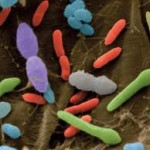 Mr. Smith explains GMOs may contribute to suppressed digestive capacity by causing dysbiosis and affecting digestive enzymes. Excess undigested proteins putrefy which feed pathogenic gut bacteria causing more leaky gut and more undigested proteins. This leads to more food allergies, inflammation and risk of autoimmunity. Butyrate is the main fuel source for the regeneration of epithelial cells in the lining of the gut. Butyrate is produced by the action of good bacteria on vegetable fiber. If you don’t have sufficient beneficial bacteria, you won’t produce sufficient butyrate and this leads to a much higher risk of colon cancer, among other health problems.
Mr. Smith explains GMOs may contribute to suppressed digestive capacity by causing dysbiosis and affecting digestive enzymes. Excess undigested proteins putrefy which feed pathogenic gut bacteria causing more leaky gut and more undigested proteins. This leads to more food allergies, inflammation and risk of autoimmunity. Butyrate is the main fuel source for the regeneration of epithelial cells in the lining of the gut. Butyrate is produced by the action of good bacteria on vegetable fiber. If you don’t have sufficient beneficial bacteria, you won’t produce sufficient butyrate and this leads to a much higher risk of colon cancer, among other health problems.
FDA: A Captive Regulatory Agency
The FDA determined that no safety studies were necessary to put GMO foods on the market. Scientists warned against allergies, toxins, new diseases, and requested long-term studies but these opinions were disregarded. In fact, Mr. Smith points out that the current FDA head czar is ex-attorney and lobbyist for Monsanto.
We only have a handful of studies on GMOs. Mice fed GMO soybeans for 8 months had damaged testicular, pancreatic and liver cells and had reduced amylase and protease enzymes and a seven-fold increase in a trypsin inhibitor (a molecule that inhibits an enzyme that digests protein). This interferes with digestive capability and decreased ability to digest protein, gas and bloating and bad breath/odor.
GMO-Free Diets Improve Gastrointestinal Disorders
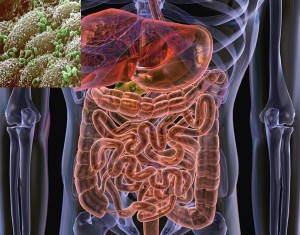 The following GI disorders have been shown to improve on a GMO-free diet:
The following GI disorders have been shown to improve on a GMO-free diet:
- IBD, Crohn’s
- IBS
- Bloating, gas, abdominal pain
- Diarrhea
- Constipation
Animals also improve on non-GMO diets.
Bt Toxin and Allergies
Mr. Smith explains that significant immune reactions have been observed in mice and farm workers who consume Bt toxin, leading to increased allergies and sensitivities. He states that the most vulnerable population appears to be the very young and very old. He believes this could increase immune load and increase sensitivity to other foods, causing an “adjuvant response”. He notes that food allergies have skyrocketed since the introduction of GMOs.
Glyphosate (the active ingredient in Round-Up) which kills beneficial flora, is sprayed on the following grains before harvest because it dries down the crops to make harvest easier and more uniform:
- Wheat
- Barley
- Rye
- Lentils
- Citrus
- Sweet potatoes
It has been shown to penetrate the food portion of the crop. Non-GMO crops are also sprayed with glyphosate, which means that you may be exposing yourself and your family to this antibiotic every time you buy fruits and vegetables at your neighborhood supermarket. The only way to avoid exposure to this chemical is to buy organic food.
Mr. Smith explains that organic means non-GMO by definition. In order to meet organic certification, food must not by genetically modified. Look for products verified non-GMO by the “Non-GMO Project”. Over 10,000 products have been verified non-GMO. Go to:
Mr. Smith notes that the EPA just recently increased allowable residue levels to levels that are a million times higher than the level which has been shown to cause damage and health effects.
According to Mr. Smith, Roundup is also an endocrine disruptor. This means that the enzyme aromatase gets disrupted leading to feminizing in males and virilizing (masculinization) in females. Roundup also leads to decreased vitamin and mineral absorption. In addition, glyphosate is a broad-spectrum chelator and makes vitamins and minerals unavailable for digestion and absorption leading to nutrient deficiencies. Glyphosate has been shown to lead to deficiencies in the following vitamins and minerals:
- Calcium
- Cobalt
- Vitamin B12
- Manganese
- Magnesium
Mr. Smith recommends choosing organic non-GMO vegetables to optimize absorption of vitamins and minerals. He gives the following websites as useful resources for more information on non-GMO foods:

